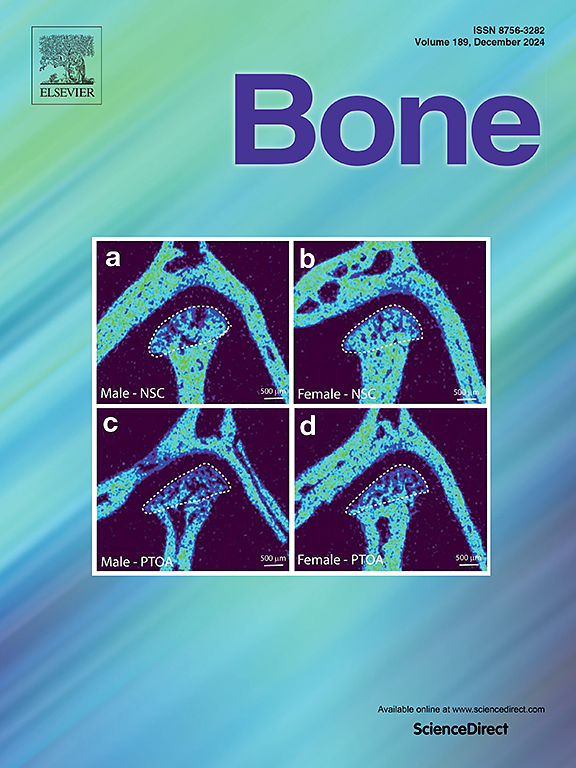The GWAS candidate far upstream element binding protein 3 (FUBP3) is required for normal skeletal growth, and adult bone mass and strength in mice
IF 3.5
2区 医学
Q2 ENDOCRINOLOGY & METABOLISM
引用次数: 0
Abstract
Bone mineral density (BMD) and height are highly heritable traits for which hundreds of genetic loci have been linked through genome wide association studies (GWAS). FUBP3 is a DNA and RNA binding protein best characterised as a transcriptional regulator of c-Myc, but little is known about its role in vivo. Single nucleotide polymorphisms in FUBP3 at the 9q34.11 locus have been associated with BMD, fracture and height in multiple GWAS, but FUBP3 has no previously established role in the skeleton. We analysed Fubp3-deficient mice to determine the consequence of FUBP3 deficiency in vivo. Mice lacking Fubp3 had reduced survival to adulthood and impaired skeletal growth. Bone mass was decreased, most strikingly in the vertebrae, with altered trabecular micro-architecture. Fubp3 deficient bones were also weak. These data provide the first functional demonstration that Fubp3 is required for normal skeletal growth and development and maintenance of adult bone structure and strength, indicating that FUBP3 contributes to the GWAS association of 9q34.11 with variation in height, BMD and fracture.
GWAS候选远上游元件结合蛋白3 (FUBP3)是小鼠正常骨骼生长、成年骨量和强度所必需的。
骨矿物质密度(BMD)和身高是高度可遗传的性状,通过基因组全关联研究(GWAS)已将数百个遗传位点联系起来。FUBP3是一种DNA和RNA结合蛋白,其最佳特征是c-Myc的转录调节因子,但对其在体内的作用知之甚少。FUBP3在9q34.11位点的单核苷酸多态性与多发性GWAS的骨密度、骨折和身高有关,但FUBP3在骨骼中的作用尚未确定。我们分析了FUBP3缺陷小鼠,以确定体内FUBP3缺陷的后果。缺乏Fubp3的小鼠成年存活率降低,骨骼生长受损。骨量减少,最明显的是椎骨,骨小梁微结构改变。缺乏Fubp3的骨骼也很虚弱。这些数据首次从功能上证明了Fubp3是正常骨骼生长发育和维持成人骨骼结构和强度所必需的,这表明Fubp3参与了9q34.11基因与身高、骨密度和骨折变化的GWAS关联。
本文章由计算机程序翻译,如有差异,请以英文原文为准。
求助全文
约1分钟内获得全文
求助全文
来源期刊

Bone
医学-内分泌学与代谢
CiteScore
8.90
自引率
4.90%
发文量
264
审稿时长
30 days
期刊介绍:
BONE is an interdisciplinary forum for the rapid publication of original articles and reviews on basic, translational, and clinical aspects of bone and mineral metabolism. The Journal also encourages submissions related to interactions of bone with other organ systems, including cartilage, endocrine, muscle, fat, neural, vascular, gastrointestinal, hematopoietic, and immune systems. Particular attention is placed on the application of experimental studies to clinical practice.
 求助内容:
求助内容: 应助结果提醒方式:
应助结果提醒方式:


